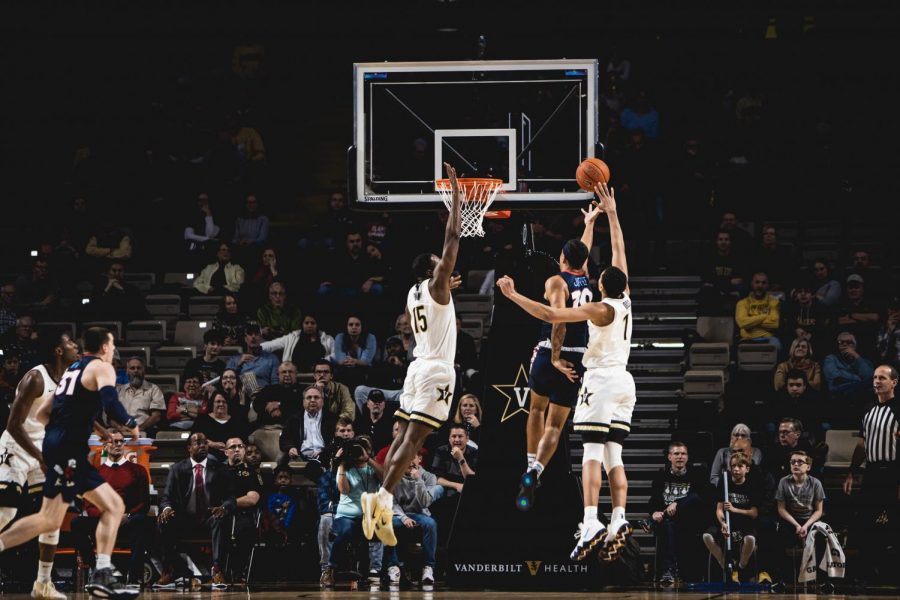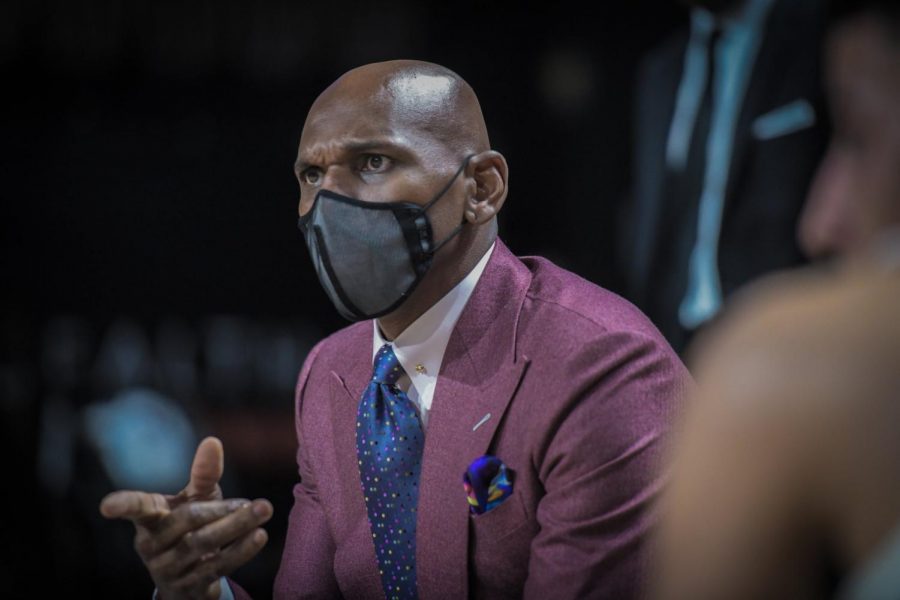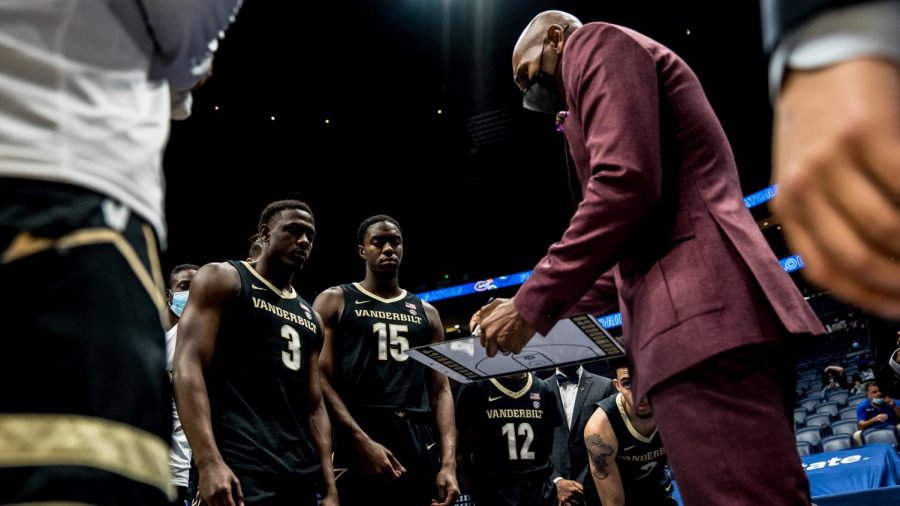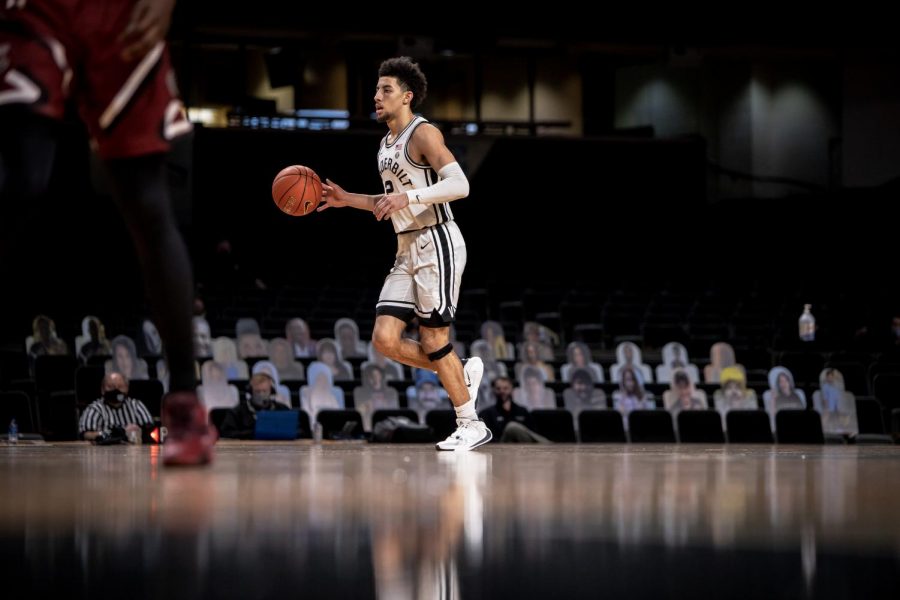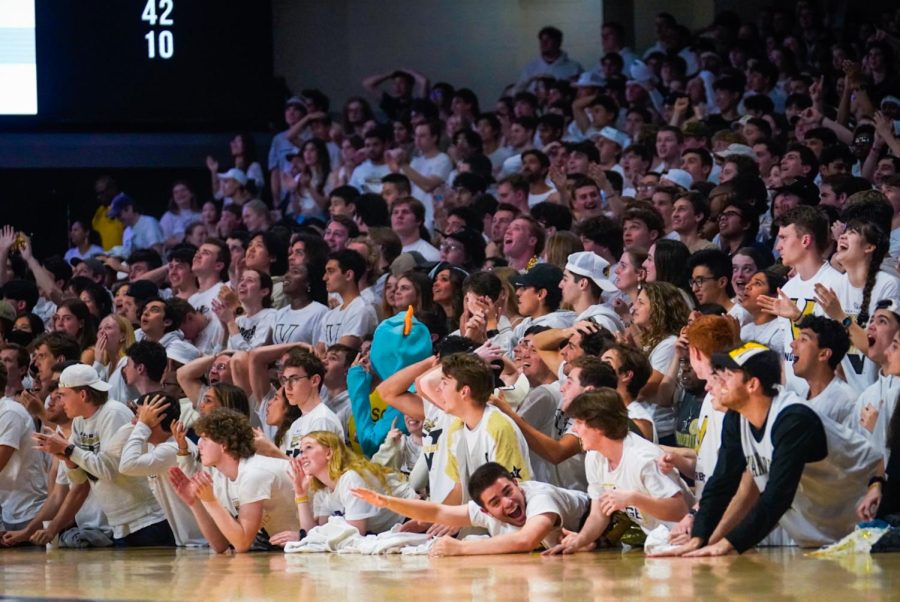The Vanderbilt Commodores have been without starting forward Clevon Brown since Dec. 14 due to an undisclosed knee injury. While Brown’s health is uncertain, his value to the team is not, and Coach Jerry Stackhouse would certainly prefer to have him back sooner rather than later. However, with an unknown timetable to return, the Commodores will have to create ways to make up for the senior’s interior presence during his absence.
Through the first nine games, Brown was a starter and one of the team’s central pieces. He was averaging career highs in minutes, points, field goal percentage, three-point percentage, rebounds and blocks. Brown was also committing fewer fouls than in past years. Up to this point in the season, he has been the player that has arguably benefited the most from Stackhouse’s arrival. His improvement on offense – particularly his three-point shooting – has been key in helping Stackhouse’s system succeed.
However, Brown’s most important contributions come on the defensive end of the floor.
Though only 6’8”, Brown is the team’s primary rim protector. His three blocks per game are first on the team and (if he were to qualify) fourth in the SEC. He also leads the team with six rebounds per game and spends more time on the court than any other Vanderbilt big man. With Brown playing, opponents averaged just under 70 points per game. Without him, opponents are scoring 79.4 points per game.
Statistics can tell a major part of the story, but Brown’s impact is also evident in the win-loss column. With Brown, the Commodores got off to a 6-3 start to the season. Without him, however, they have struggled to a 2-3 record, and the schedule is only becoming more difficult with SEC play beginning. Without Brown in the lineup, Stackhouse has had to alternate his starters. The Commodores have used three different combinations, demonstrating how the lineup needs Brown as a stabilizing force.
In Vanderbilt’s crushing 79-83 loss to Auburn on Wednesday night, the team’s issues without Brown were on full display. Auburn’s starting center Austin Wiley dominated the paint on both sides of the court, and he finished the game with twelve rebounds (three of them on offense) and three blocks in only 22 minutes. As a team, the Commodores were significantly outrebounded 28-39, and they allowed the Tigers to corral 14 offensive rebounds. In an effort to improve the team’s rebounding and interior defense, Coach Stackhouse even brought out a 2-3 zone, but it was ultimately unsuccessful in slowing down the Tiger offense.
After five games without Clevon Brown, Vanderbilt is still looking for answers. With the conference schedule kicking off, the Commodores cannot wait out the injury. Coach Stackhouse and the team have several options, but they will have to adjust depending on the opponent. With the roster’s current construction, there are a variety of lineups and styles the team can play.
Forwards Dylan Disu and Matthew Moyer and center Ejike Obinna are the three big men whose roles have increased the most in the absence of Brown. At the same time, guards Max Evans and Jordan Wright have seen more minutes in small ball lineups. Some of Vanderbilt’s best lineups in Brown’s absence have been while playing this style. Stackhouse consistently plays a quintet composed of guards Saben Lee, Scotty Pippen Jr., one of Evans and Wright, forward Aaron Nesmith and one of the Disu, Moyer, Obinna trio.
While this lineup has been solid and allows Vanderbilt to get out on the break, it is ultimately undersized and frequently overpowered by larger opponents. Unfortunately for the Commodores, conference rivals will be bigger and more athletic than most non-conference foes, meaning that the team will likely have to look at lineups with two big men.
Disu, Moyer and Obinna all bring different skills to the table. At 6’10” and 243 lbs., Obinna is the team’s secondary rim protector, but he has struggled to fill in Brown’s role on offense. Disu’s ability to spread the floor and make passes inside the arc have helped, but it is a tall order to ask a first-year to anchor a team defensively. Moyer is versatile on defense and provides the team with experience and leadership. However, his three-point shot has been inconsistent this season, and Stackhouse wants as many shooters as possible on the floor.
With Obinna, Coach Stackhouse can try to replicate Brown, but with Disu and Moyer, he would have more flexible and fast-paced lineups.
When playing against SEC big men, Brown’s absence will be magnified even further. Stackhouse has prepared the roster to play man-to-man defense, but the squad’s lack of size will hurt when playing SEC teams. One-on-one matchups under the basket could prove fatal for the Commodores. The coaches should look to improve the team’s overall help defense in order to support whoever is battling down low.
The other option Vanderbilt can try is zone defense, which should help an undersized team protect the paint. However, Stackhouse’s struggled mightily on Wednesday evening. The defense gave up straight line drives for layups and easily lost the rebounding battle. With more practice, zone defense could be a possibility moving forward, as the team has the speed and aggressiveness needed to execute, and the big men can be plugged into different spots. But with the season already in full swing, it will be difficult to find the time to refine the zone.
Brown’s return remains mysterious – he may be out for weeks. He may be out for the season. Stackhouse has kept that information close to the vest, if he even knows the diagnosis at all. For the time being, however, the team will need Disu, Moyer and Obinna to step up. A closing lineup consisting of Lee, Pippen Jr., Nesmith and two of the three bigs has the size, talent and versatility to compete in the SEC. With the roster’s current build, the team should play man-to-man, but improvement in help defense is crucial. While Obinna is Brown’s best defensive replacement, having Disu and Moyer on the court could give Vandy a more adaptable offense that could make up for Brown’s absence.
Vanderbilt has a lot of options, but, with Clevon Brown, the choice is much simpler. Now it’s up to Stackhouse and his staff to solve the puzzle.


